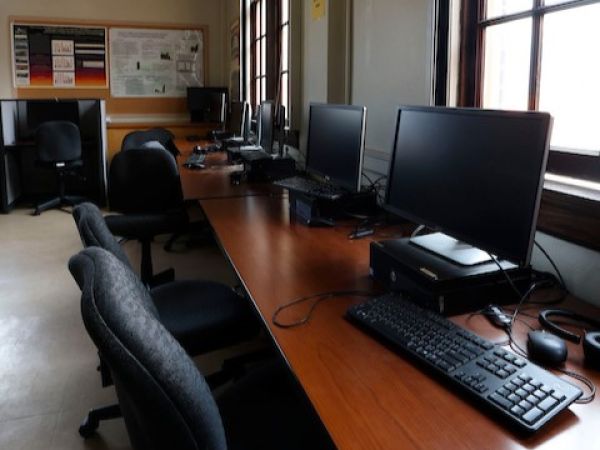Software, Hardware and Systems Accessibility
All software, hardware and systems purchased must be accessible and must produce accessible products. Accessible, in this context, means compatible with assistive technology. Examples of software, hardware and systems include, but are not limited to, learning and content management systems, library and email systems, and administrative management systems such as finance, registration and human resources, and all software, hardware and software services used for student services.
-
Software includes freeware, shareware, desktop, enterprise, subscription and remotely-hosted options. Software that is accessed through a web-browser must also be accessible.
This includes any digital textbooks and course materials that students must purchase, or any external digital tools that faculty plan to use in their courses.
All of these come under the UM requirement to meet 508 and WCAG 2.0 AA digital accessibility standards and need to be reviewed even if they are free or previously installed.
-
Several standard peripherals and other EIT are discussed as categories below but it is important to remember that there are always exceptions. If you have questions, please contact Accessible Technology Services at ats@umontana.edu.
-
Windows and Apple computers are largely accessible because their operating systems work with assistive technology, a variety of input devices are available, and screen reading software is available. Tablets and iPads are also generally accessible. There are some computers that do not create access - including some thin clients.
If your purchase falls within the known accessible options, they will be moved quickly through accessibility review
-
Scanner and copiers can take a quick picture of a document or, in many cases, can recognize the characters in text by optical character recognition (OCR). Text documents that are saved as images can't be read by screen readers. The logical solution may be to require that all scanner and copies include OCR capabilities. However, machines at the lower end of the price scale may have OCR options that are inferior to existing campus OCR options. Thus we are not required to purchase OCR-capable scanner or copiers when we are purchasing desktop models but should include OCR options when purchasing larger, departmental-wide scanner or copiers.
-
UM Printers should be capable of printing at least 600 dots per inch (DPI) so that printed material is as legible as possible.

Accessibility Testing & Review
All software, hardware, digital textbooks, and course materials, whether free, previously installed, or integrated into Canvas, must be reviewed and tested by UM’s Accessible Technology Services (ATS) before use.
Review & Testing Process
The accessibility review and testing process can take some time; here are some tips to ensure the software or hardware being considered are approved in time for use:
- Research the product before submitting a request for review. Work with potential vendors to learn about and get temporary access to determine if it meets expectations.
- Submit review requests 4-6 weeks in advance to allow time to review and confirm that it meets UM's accessibility compliance requirements.
- Include a Voluntary Product Accessibility Template (VPAT) in your review request. Vendors provide important accessibility details about their product in the VPAT. Find this document on the vendor’s website or request a copy from the sales representative.
Accessible Technology Services (ATS) will work with vendor to access the platform and test the content then will issue a determination on use.
Please refer to the Procurement section for more information about working with vendors and finding VPATs.
Hardware Accessibility Standards
Voluntary Product Accessibility Templates (VPATs) are used for evaluating UM hardware accessibility. Some hardware is directly covered by 508 standards in sections such as:
- 23: Telecommunications Products
- 24: Video and Multi-media Products
- 25: Self-Contained, Closed Products
- 26: Desktop and Portable Computers
- 31: Functional Performance (details below)
Some hardware is directly covered by 508 standards. If none of the other categories apply, Section 1194.31 Functional Performance will be UM's measurement for hardware accessibility:
- At least one mode of operation and information retrieval that does not require user vision shall be provided or support for Assistive Technology used by people who are blind or visually impaired shall be provided.
- At least one mode of operation and information retrieval that does not require visual acuity greater than 20/70 shall be provided in audio and enlarged print output working together or independently, or support for Assistive Technology used by people who are visually impaired shall be provided.
- At least one mode of operation and information retrieval that does not require user hearing shall be provided, or support for Assistive Technology used by people who are deaf or hard of hearing shall be provided.
- Where audio information is important for the use of a product, at least one mode of operation and information retrieval shall be provided in an enhanced auditory fashion, or support for assistive hearing devices shall be provided.
- At least one mode of operation and information retrieval that does not require user speech shall be provided, or support for Assistive Technology used by people with disabilities shall be provided.
- At least one mode of operation and information retrieval that does not require fine motor control or simultaneous actions and that is operable with limited reach and strength shall be provided.
